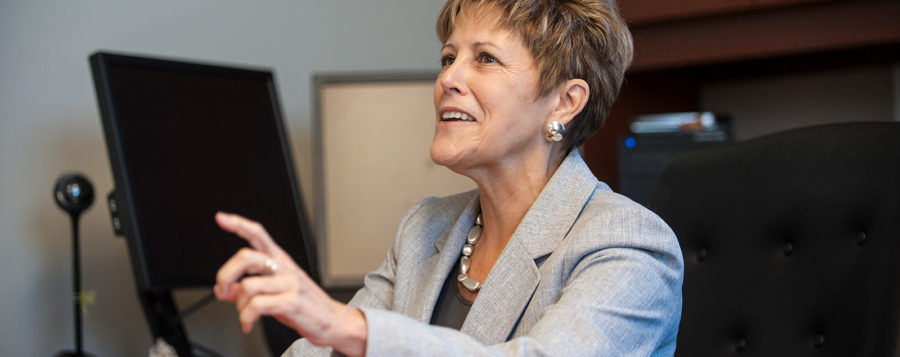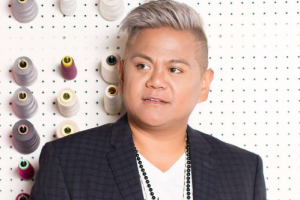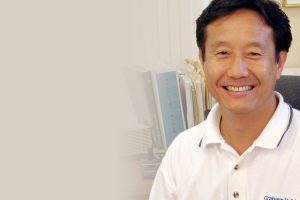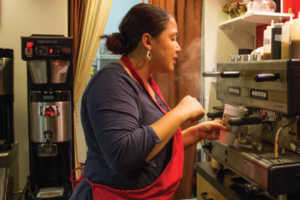“I find a great deal of humor and irony in my story of how I got here,” says Jane Sawyer, the district director for the U.S. Small Business Administration’s Hawaii District Office. At first glance, Sawyer looks the part of a no-nonsense business professional and has a list of accomplishments at the SBA to prove it. But rules and regulations have never been Sawyer’s thing.
Sawyer holds a degree in education and fine arts from the University of Colorado Boulder.
After college, she put her right brain to work as a painter, potter and ceramic sculptor while working as a middle school teacher, creating the fine arts curriculum and teaching art classes.
A budding romance brought Sawyer to Hawai‘i in 1983. While a lasting love never materialized, her entrepreneurial spirit did.
When Sawyer went to the SBA for resources to grow her business, she found the services inadequate. Instead of throwing up her hands in frustration or calling it quits, Sawyer volunteered her time and partnered with the SBA to create more accessible and useful business programs for women. When the SBA asked her to come on board, Sawyer balked at the prospect of a government job, feeling her creativity would be at odds with bureaucratic structure. Eventually she came around, took the position and has long been the out-of-the-box thinker championing strategic community partnerships to help small businesses succeed in Hawai‘i and across the Pacific.
HOW DID YOU INITIALLY GET INVOLVED WITH THE SBA?
It’s been an interesting path. A friend was toying with the idea of starting a daily money-management and protective-services business. I got involved and then took over the business. Because I knew nothing about business, and my first business plan looked like a lesson plan, I came to SBA for help.
WHAT WAS YOUR FIRST IMPRESSION OF THE SBA?
I needed more tools than they had. The agency was just starting to develop tools for women startups, so I became involved with what was then called the Women in Business Committee. We had connections with SBA.
They helped guide us and supported the workshops, training and outreach programs for women that I was leading.
WERE YOU STILL RUNNING THE BUSINESS WHILE YOU WERE LEADING THE COMMITTEE?
Yes, I established the business plan and funding. It was part of my educational process—how to set up and manage the books. My friend was doing entrepreneurial development work at the SBA and helped facilitate the group, garnering the energy of these volunteers to produce the training programs and workshops that we needed.
WERE THERE ANY SMALL-BUSINESS WORKSHOPS GEARED TOWARD WOMEN AT THE TIME?
It was just emerging. SBA had discovered that there was a need for that. Women were the fastest-growing segment of the small business economy at that point.
HOW WERE YOUR EFFORTS RECEIVED BY THE COMMUNITY?
The response varied. Many of the women were startups or connected to small businesses or organizations. There were eight to 14 women in the group, some affiliated with the banks, some representatives of DBEDT, some women business owners were there saying, “this is what we really need.” There were barriers to women being accepted as successful business owners, barriers to their access to capital. How do we look at that, help with that change and learn as we go? I was just being a sponge to absorb all that stuff since I didn’t have the foresight to go to business school.
HOW DID THAT VOLUNTEER WORK EVOLVE INTO A SALARIED POSITION WITH THE SBA?
My predecessor in the business-development division was leaving and the boss asked me to think about coming to work for SBA.
I said no, I don’t want to work for the government. I perceived the government to be too structured, and I like flexibility and creativity. I’m a little bit more of a project to project person, like a serial entrepreneur.
I thought it would stifle me and that I would probably drive the rest of the staff crazy. I wasn’t looking for a career, but finally I put my application in to placate the then director of the SBA. He said he would pick me over the other candidates and asked again if I would take the job. I committed to three years to develop our SBDC [small business development center], build a small-business information center and increase the visibility and awareness of the SBA. And we did.
HOW DID YOU MAKE IT HAPPEN? CONNECTIONS? ELBOW GREASE?
It was an interesting mix of hard work, naivete and the fact that the agency was ready to become more outward facing to provide and streamline the tools we had for small businesses. I came at a good time, when SBA across the nation was looking for change. We are definitely a small-business state. Our businesses could be called micro businesses in many ways, looking at the national size standards, so it was good timing.
WHAT IS YOUR ROLE AT THE SBA?
I manage and oversee all of our key programs and monitor and approve all the cooperative agreements within the framework of SBA.
We’re a federal agency, which means that Congress tells us what to do, gives us the big picture, and then the agency develops programs, writes rules and regulations and looks at how to distribute government funds to help us accomplish our objectives.
We interpret what we need here through a local lens. We monitor relationships with all our active lenders. We may look at finding alternative lenders or micro-lenders and attract SBA dollars to Hawai‘i. We work with colleges and universities for the SBDC program, so we have to monitor how those resources are deployed. And we look at monitoring cooperative agreements with the women’s business centers.
My staff and team have to get our programs into the community. The Hawaii District Office is one of 68 field offices. We work with a variety of program offices: government contracting, access to capital, entrepreneurial development, even advocacy and disaster assistance. We work with field operations from all those different program offices to deliver the programs and initiatives.
We do process improvement and course correction, and we try to partner and develop new networks.
WERE YOU ABLE TO FIND CREATIVITY AND FLEXIBILITY IN YOUR GOVERNMENT POSITION?
Yes, it was a steep learning curve on the inside, but we’ve changed some of the framework to work on
relationships instead of managing everything ourselves. We often fund new projects or resource partners, even in expanding the small business development centers. We created the Business Information and Counseling Center that was downtown in partnership with the banks and the City and County, which has been copied. We did one on Moloka‘i, the Kuha‘o Business Center. We helped get the Maui Small Business Resource Center started. We started a Women’s Business Center and SBDC in American Samoa and an SBDC in Guam, which was beyond my three year plan.
It sometimes involved pushing against the structure and testing some of the limits, developing new, strategic alliances and partnerships. We’ve seen tremendous increases in our programs and services over the years. Whether in our government contracting programs or our lending programs, more people are coming in and seeking SBA assistance, which ultimately results in more small businesses getting started and using SBA for support.
WHO IS YOUR DEMOGRAPHIC? WHO DO YOU WANT TO WALK THROUGH THE DOOR?
Anyone with an idea who wants to start a business, but they need to have a vision and, perhaps, a destination in mind. It may even be what they want to accomplish by having a business, because that implies they would have an idea, a talent, a skill, a desire and the willingness to put in what it takes.
The destination may be that you’ve always wanted to be your own boss. It may be you need to create additional income to put your kids in a good school, or that you need more financial independence. Some people just want to generate small income, others want to make millions, be financially independent and drive a big car.
We have people come in and say, “I want to be able to go surfing when the surf’s up, or stay home and raise my kids. How do I do that?” We now have enough flexible tools and programs to help people accomplish their goals.
HAVE YOU CONTINUED TO GROW WOMEN’S BUSINESS PROGRAMS?
I’m still very committed to the women’s business-ownership piece and definitely have been an advocate for women, particularly since there have been so many barriers and challenges: the glass ceiling, lack of acceptance in certain professions and the need for financial independence. I feel that we really need to make sure we have those tools available.
SBA has developed through our Office of Women’s Business Ownership, a program of women’s business centers. We work with a resource partner in the community and provide funding for a business center that’s designed to address the needs of women: connect them with capital, make sure we can accommodate different hours, schedules and learning styles. On O‘ahu we have the Patsy T. Mink Center for Business and Leadership.
IS SBA ACTIVE IN TECH STARTUPS AND THE INNOVATION SECTOR?
A lot of people don’t realize how much we do as an agency in the area of innovation.
We’re re positioning SBA to have support tools to deploy to startups in Hawai‘i. We manage SBA innovation research grants for nine different federal agencies. Last year, SBA provided grants of $50,000 to three accelerators in Hawai‘i: XLR8UH, the Maui Food Innovation Center’s Maui Accelerator Program and GVS Trans media Accelerator in Kailua-Kona. We’re hoping to continue to support the innovation community and to start a small-business investment company here to bring SBA funds for venture capital into Hawai‘i.
AS THE DIRECTOR OF THE HAWAI‘I OFFICE, YOUR TERRITORY ALSO COVERS PACIFIC ISLAND NATIONS AND U.S. TERRITORIES.
WHAT HAVE YOU LEARNED FROM WORKING WITH BUSINESS OWNERS IN THESE DIFFERENT CULTURES?
One of the things I’ve learned is how important it is to think local and be able to modify, tweak or customize some of our programs to what we look like here in Hawai‘i. I don’t mean ignoring the global market or the need for more manufacturing or more infrastructure, but looking at what the needs are here and how partner organizations may help.
The network that we’ve created through banks, educational institutions, trade organizations and the Chamber of Commerce really amplifies what we can do and how we can reach small businesses. SBA has remained a small agency, but it is powerful through all those partnerships.
ANYTHING NEW AT SBA THAT YOU’RE REALLY EXCITED ABOUT?
There’s a new tool that’s come out to help prospective borrowers connect with one of our local banks. It’s called LINC. It connects banks that have signed up with SBA for referrals and small business owners looking for financing. It’s an interesting, new accessibility tool.
Another program I’m excited about, because it meets the needs of existing businesses, is the emerging leaders program, which we’ve done annually for the last five years. It’s for existing businesses positioned to take the next step to meet their business objectives and goals.
It’s like a mini MBA. We have 15 to 18 seats every year and it’s a competitive process to get into the class. It helps generate new revenue, creates jobs and generates tax revenues. It’s like an accelerator, but for any small business.
The SBA Small Business Awards is my favorite program.
One of my first charges was to increase its visibility and make it a statewide program. We get 100 nominations a year. I like sifting through the entries to see what’s out there and who’s doing what in exports, innovation and family-owned business. There are so many great stories.
WHAT ADVICE CAN YOU GIVE TO UP-AND-COMING ENTREPRENEURS?
Articulate what you want to do and where you want to go.
What’s your real purpose?
Visualize the journey and be willing to take detours. Do your homework, grow and learn on the adventure. Dig deep and figure out what you want to do and whether you’re willing to work to get there. Exploring your potential and achieving it is life’s challenge.




